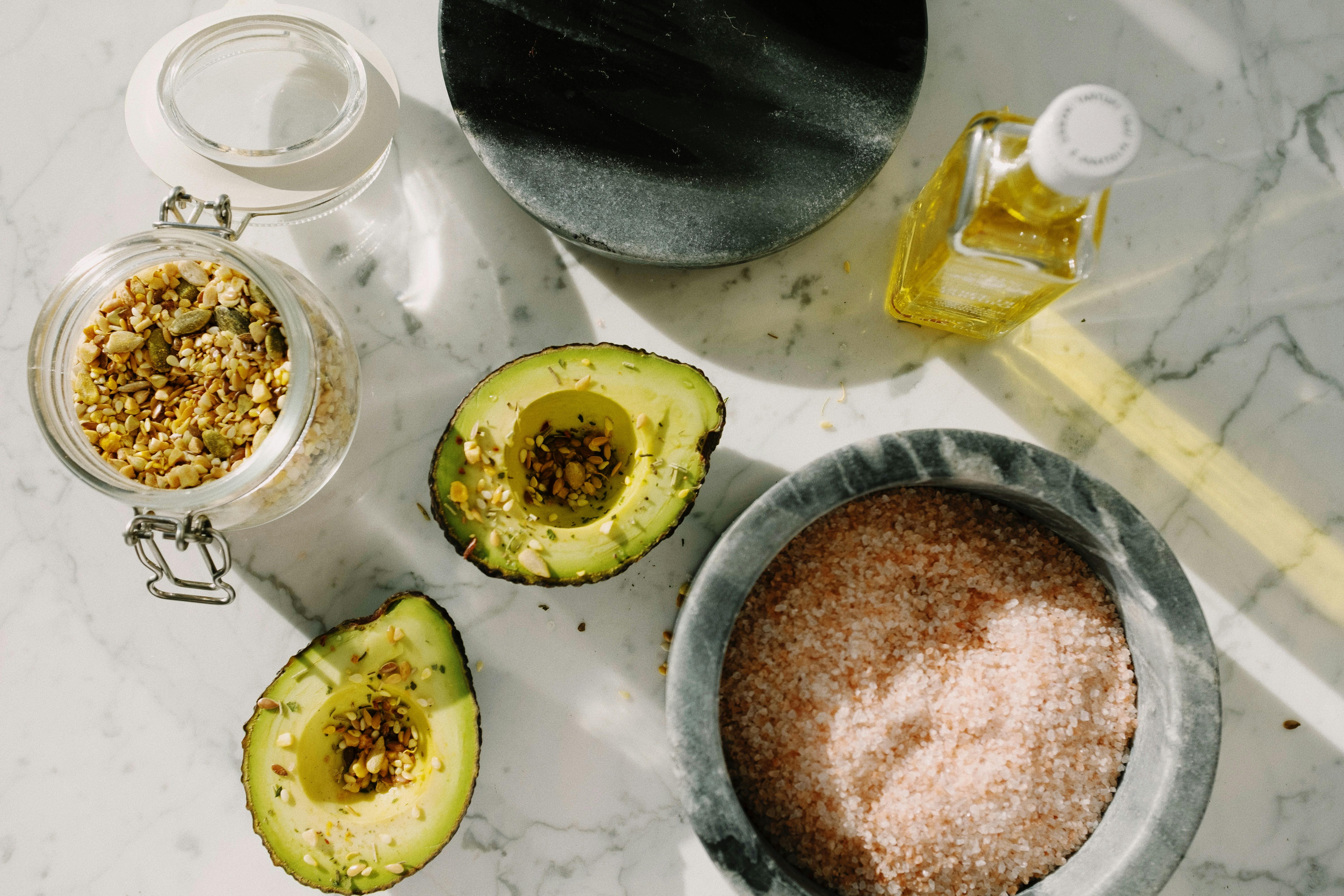Olive is a popular and beloved food item across the world. Its use as a condiment, snack, or in a variety of dishes has made it an essential ingredient in many cuisines. But there is a common question that arises regarding olives – is it a vegetable or fruit? This article will discuss the answer to this question and provide further information about olives.Olive is a fruit.
Characteristics of Olives
Olives are a type of fruit that have been enjoyed by people for thousands of years. They come in a variety of shapes, sizes, colors, and flavors. Olives are high in antioxidants and healthy fats, making them a great addition to any diet. Olives are also a good source of vitamins and minerals, including vitamin E, iron, and potassium.
In terms of texture, olives can range from crunchy to creamy. The most popular types of olives are green or black. Green olives tend to be more tart while black olives have a slightly sweeter flavor. Olives can be eaten fresh or canned, and they can also be used in salads or as an ingredient in many dishes.
In terms of nutrition, olives are high in monounsaturated fats which can help to lower cholesterol levels and reduce the risk of heart disease. They also contain polyphenols which have anti-inflammatory properties and may help to protect against certain diseases such as cancer and diabetes.
Overall, olives are a tasty and nutritious snack that can be enjoyed by everyone. They offer an array of health benefits and can be used in both sweet and savory dishes. Whether you like them fresh or canned, they’re sure to add flavor to any meal!
Scientific Classification of Olives
Olives are a species of small tree in the family Oleaceae, native to coastal areas of the eastern Mediterranean basin. They are evergreen trees that produce small fruits known as olives. The scientific classification of olives is as follows: Kingdom: Plantae, Division: Magnoliophyta, Class: Magnoliopsida, Order: Lamiales, Family: Oleaceae, Genus: Olea and Species: Olea europaea.
Olives have been cultivated for thousands of years and are an important crop in many countries around the world. They are used for food, oil production, and medicinal purposes. The fruit is eaten both fresh and cured, and can be used to make olive oil, pickles, tapenades and other products. Olive oil is one of the most commonly used cooking oils worldwide.
The olive tree is hardy and drought-resistant, making it well-suited for cultivation in a range of climates. It grows best in temperate climates with mild winters and hot summers. Olives prefer well-drained soil with a pH between 6 and 8.5. The trees require plenty of sunlight to thrive but can tolerate some shade if necessary.
The olives harvested from the tree vary in color depending on their ripeness; from green to purple or black when fully ripe. They contain a single stone or pit which is edible but often discarded due to its bitter taste. Olives contain high levels of oleic acid which gives them their characteristic flavor as well as numerous health benefits including reducing inflammation and protecting against chronic diseases such as cancer and heart disease.
Depending on their use, olives may be harvested by hand or mechanically at different stages of ripeness ranging from green to black/purple mature fruit. While green olives are often cured or pickled before being eaten they can also be consumed fresh when fully ripe; however they have a short shelf life after being picked so must be consumed quickly or preserved in some way if they are not going to be eaten immediately
Nutritional Value of Olives
Olives are a popular snack that is full of nutrition. The health benefits of olives are numerous, making them a great addition to any diet. Olives are rich in antioxidants, vitamins, minerals, and many other nutrients that can help protect the body from various diseases and improve overall health. They also contain monounsaturated fats, which can help lower cholesterol and reduce the risk of heart disease. Olives are also a good source of fiber, which helps to keep you feeling fuller for longer and can aid in digestion.
In terms of vitamins and minerals, olives contain vitamin E, vitamin K, iron, copper, manganese, zinc, selenium, magnesium and calcium. These vitamins and minerals are important for keeping the body healthy and helping to prevent certain diseases. Additionally, olives are a good source of healthy fats such as oleic acid and linoleic acid which can provide protection against inflammation in the body and reduce the risk of certain types of cancer.
Olives also contain high levels of polyphenols which act as antioxidants in the body. These compounds help to protect cells from damage caused by free radicals in the environment and can reduce inflammation in the body. Furthermore, olives contain phenolic acids which have been shown to be beneficial for reducing cholesterol levels in people with high cholesterol levels.
Overall, olives provide an array of health benefits due to their high nutrient content. They are an excellent snack that is packed with essential vitamins and minerals that can help keep your body healthy and functioning optimally.
Health Benefits of Eating Olives
Olives are a delicious and nutritious fruit that have been enjoyed by people all over the world for centuries. Olives are not only a tasty addition to salads and other dishes, but they also offer a range of health benefits. Here are some of the top health benefits of eating olives:
1. Olives are high in monounsaturated fatty acids, which can help lower cholesterol levels. Studies have shown that eating olives can help reduce LDL (“bad”) cholesterol levels and increase HDL (“good”) cholesterol levels.
2. Olives contain high amounts of antioxidants, which can help protect against oxidative damage caused by free radicals. This helps to keep your cells healthy and may reduce your risk of developing certain diseases.
3. Olives are also a great source of vitamin E, which is important for maintaining healthy skin. Vitamin E is an antioxidant that helps protect skin cells from damage caused by UV rays.
4. Eating olives may also help protect against certain types of cancer, such as breast, colon, and prostate cancer. The antioxidants present in olives can help fight off free radicals that can lead to cell damage and cancer development.
5. Olives contain oleic acid, which is a type of monounsaturated fat that has been linked to reducing inflammation in the body. This may help reduce the risk of developing chronic diseases such as heart disease and diabetes.
Overall, olives are an excellent addition to any diet due to their numerous health benefits and delicious flavor! They can be enjoyed on their own or added to other dishes for an extra flavor boost and nutritional boost!

Difference between Vegetables and Fruits
Vegetables and fruits are both essential parts of a healthy diet. While they have some similarities, there are also some key differences between them.
The most obvious difference is that vegetables are typically savory or bitter in taste, while most fruits are sweet. Vegetables are usually eaten cooked, while fruits can be eaten raw or cooked. Nutrient-wise, vegetables tend to be higher in vitamins and minerals than fruits, though there are exceptions.
Vegetables generally provide more dietary fiber than most fruits do; this helps the body to regulate digestion and maintain a healthy gut. Vegetables also tend to be lower in calories than fruit due to their higher water content. Fruits on the other hand often contain more natural sugars than vegetables do, making them a good source of energy when consumed in moderation.
It is important to incorporate both vegetables and fruits into your diet for optimal health benefits. Eating a variety of both can help ensure that your body has all the nutrients it needs to stay healthy and function properly.
Different Types of Olives
Olive trees are one of the oldest cultivated trees in the world, and they produce a variety of olives that are used in a wide array of dishes. Olives come in many different shapes, sizes, and colors, and each type has its own unique flavor and texture. The most common types of olives include green olives, Kalamata olives, black olives, Niçoise olives, Picholine olives, and Amfissa olives.
Green olives are harvested when they are still unripe and have a bright green color. They have a grassy flavor that is slightly bitter when eaten raw but mellows out once it is cured or pickled. Kalamata olives are grown in the Kalamata region of Greece and typically have an egg-like shape with a deep purple-brown color. They have a salty flavor with notes of almonds and herbs.
Black olives are harvested when they are fully ripe and have a dark purple-black color. They have an intense flavor when eaten raw but become milder when cured or pickled. Niçoise olives are small black or brownish-purple French olives with an earthy flavor that is slightly sweet yet briny. Picholine olives are light green to yellow in color with a mild flavor that is slightly nutty. Amfissa olives come from the Amfissa region of Greece and they can be either green or black in color with an earthy flavor that is buttery yet salty.
No matter which type you choose, you can be sure that it will add complexity to your dish thanks to their unique flavors and textures! Olives can be eaten raw or cooked in various recipes such as stews, salads, pizzas, pastas, sandwiches, dips, sauces and more.
Olive Cultivation
Olive cultivation is an ancient practice that has been around for more than 6,000 years. The olive tree is believed to have originated in the Mediterranean region and was introduced to other parts of the world by traders and travelers. Olives are grown on large farms, ranging from acres of land to small family owned plots. The trees require well-drained soils and a warm climate with plenty of sunshine for optimal growth. Farmers typically plant saplings in late winter or early spring, often using an irrigation system to water the young plants. Once established, the olive trees are pruned regularly to promote healthy growth and greater yields. In addition, farmers may use fertilizers or organic mulch to improve fertility and soil quality and protect against pests and disease.
Harvesting Olives
Once mature, olives can be harvested using several methods. Handpicking is the most common method used by small scale farmers or those growing olives for oil production. This process involves picking olives one by one from the trees and placing them into baskets or bins. Mechanical harvesting machines may also be used on larger farms to quickly collect large amounts of olives at once. After harvesting, olives must be processed within a few days in order to preserve their flavor and nutritional value. Olives can be cured using several methods including curing with oil or brine, drying them in the sun or storing them in cold storage rooms.

Conclusion
In conclusion, olives are a fruit. It is part of the drupe family, which means it has a thin outer skin, a fleshy middle, and a single hard pit in the center. Olives are most often used to make oil, but they can also be eaten fresh or cured in brine or oil. While some cultures may consider olives as vegetables because of their savory flavor and culinary uses, the scientific classification of olives makes them a fruit.
Overall, olives are an incredibly versatile and tasty fruit that can be used in many different ways. Whether you eat them fresh or use them to make olive oil, they are sure to please any palate.



